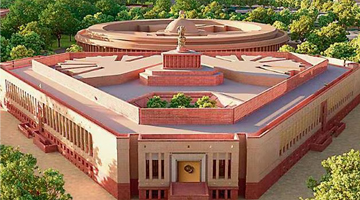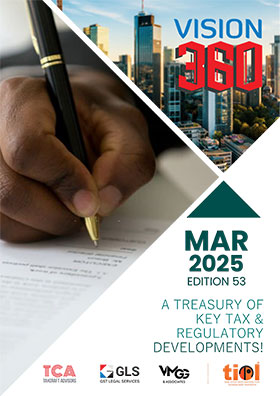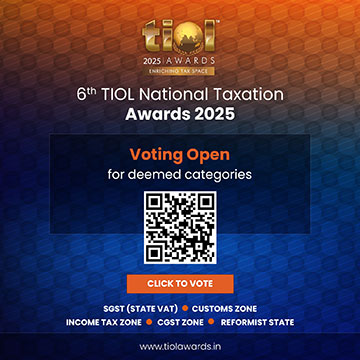Nagging issues under SVLDRS
JANUARY 27, 2020
By Saurabh Bhise (Associate) and Rajesh Ostwal (Joint Partner), Lakshmikumaran & Sridharan, Mumbai
 FINANCE (No.2) Act, 2019 introduced the Sabka Vishwas (Legacy Dispute Resolution) Scheme, 2019 ("Scheme"). On 5.7.2019, while presenting budget for 2019-20, the Finance Minister stated:
FINANCE (No.2) Act, 2019 introduced the Sabka Vishwas (Legacy Dispute Resolution) Scheme, 2019 ("Scheme"). On 5.7.2019, while presenting budget for 2019-20, the Finance Minister stated:
"GST has just completed two years. An area that concerns me is that we have huge pending litigations from pre-GST regime. More than 3.75 lakh crores are blocked in litigations in service tax and excise. There is a need to unload this baggage and allow business to move on. I, therefore, propose, a Legacy Dispute Resolution Scheme that will allow quick closure of these litigations. I would urge the trade and business to avail this opportunity and be free from legacy litigations."
Circular No. 1071/4/2019-CX.8 dated 27.8.2019 further clarified the objectives of the Scheme:
"2. As may be appreciated, this Scheme is a bold endeavour to unload the baggage relating to the legacy taxes viz. Central Excise and Service Tax that have been subsumed under GST and allow business to make a new beginning, and focus on GST. Therefore, it is incumbent upon all officers and staff of CBIC to partner with the trade and industry to make this Scheme a grand success.
3. Dispute resolution and amnesty are the two components of this Scheme. The dispute resolution component is aimed at liquidating the legacy cases locked up in litigations at various forums whereas the amnesty component gives an opportunity to those who have failed to correctly discharge their tax liability to pay the tax dues. As may be seen, this Scheme offers substantial relief to the taxpayers and others who may potentially avail it. Moreover, the Scheme also focuses on the small taxpayers as would be evident from the fact that the extent of relief provided is higher in respect of cases involving lesser duty (smaller taxpayers can generally be expected to face disputes involving relatively lower duty amounts)."
The Scheme, broadly speaking, provides for settlement of legacy disputes relating to central excise and service tax matters by paying specified percentage of tax/duty amount in dispute. On making such payment, balance amount of duty/tax, entire interest, penalty was completely waived and immunity granted from prosecution under the Scheme.
The Central Board of Indirect Taxes and Customs ("CBIC/Board") came out with series of Circulars and Frequently Asked Questions ("FAQs") for clarifying various issues arising from the Scheme. Though the proactive nature of the Board needs to be appreciated on one hand, the stream of clarifications seems to suggest that the Scheme was hurriedly drafted.
Even after many clarifications, certain necessary aspects to settle the matter are not clear. There are certain issues on which many applications were either rejected or the Assessee were asked to pay higher amounts to settle the dispute.
Issues under the Scheme
Redemption Fine
As per the stand taken by the department, the Scheme does not grant any relief from payment of redemption fine. Therefore, the declarants are being directed to pay entire redemption fine to seek relief under the Scheme.
The amount payable under the Scheme to settle the dispute, in all categories, is certain percentage of tax/duty involved. No portion of penalty or interest is called upon to pay to settle the dispute under the Scheme. Looked from another angle, redemption fine is also in the nature of penalty. In these circumstances, there is no sense in holding onto redemption fine & waiving amounts like penalty, interest, etc.
Further, even the FAQs issued by the Board and twitter handle of CBIC stated "total waiver of interest, penalty and fine in all cases" while advertising the benefits available under the Scheme.
This issue is pending before the Hon'ble Gujarat High Court - 2019-TIOL-2951-HC-AHM-CX wherein an interim relief has been granted and final order is awaited.
Remand matters
In many instances, the tax demand originally proposed in the notice and/or confirmed in the Order-in-Original is reduced due to partial relief, quantified or un-quantified, given by the authorities while remanding the matter. These reliefs have attained finality over a period of time since Revenue has not challenged them. In such cases, there is no clarity as regards "tax due" as defined in the Scheme and consequently the amount payable under the Scheme. Due to lack of clarity, the department is considering "tax due" as the demand originally proposed in the notice disregarding the reliefs obtained at various stages of proceedings in past.
Arrears of duty
Section 124(1)(c) specifies the relief available under the Scheme where the tax dues are relatable to an amount in arrears. Section 124(2) also provides that any amount paid as pre-deposit or as deposit during enquiry, investigation or audit, shall be deducted while calculating the relief under the Scheme. Amount in arrears has been defined to mean the amount of duty which is recoverable as arrears of duty on account of no appeal having been filed by the assessee against order/order in appeal or an order in appeal attaining finality.
Suppose the assessee has outstanding arrears of duty demand amounting to Rs.1crore and assessee has already paid Rs.60 lakhs. After applying the applicable relief @ 60% on Rs.1crore, no amount would be payable under the Scheme for settling the matter.
However, Circular No. 1072/05/2019-CX dated 25.9.2019 clarified that relief available under Section 124(1)(c) will be applied to the net outstanding amount i.e., amount of duty less deposits. Hence, in the above example, amount of tax dues is Rs.40 lakhs (i.e., 1 crore less 60 lakhs) on which applicable relief would be calculated and Rs.16 lakhs become payable to settle the matter.
The aforesaid circular goes beyond the provisions of the Scheme enacted by the Finance (No.2) Act, 2019.
Conclusion
The aforementioned issues, amongst others, highlight the confusion prevalent in the trade and industry regarding the Scheme. Where the declarant does not agree with the amount mentioned in the statement issued by the department, the declaration is liable to be rejected and only remedy then left with the declarants is to approach High Courts by way of filing writ petitions giving rise to avoidable litigation. Consequently, we would be back to where it all started!
(The views expressed are strictly personal.)
| (DISCLAIMER : The views expressed are strictly of the author and Taxindiaonline.com doesn't necessarily subscribe to the same. Taxindiaonline.com Pvt. Ltd. is not responsible or liable for any loss or damage caused to anyone due to any interpretation, error, omission in the articles being hosted on the site) |









 FINANCE (No.2) Act, 2019 introduced the Sabka Vishwas (Legacy Dispute Resolution) Scheme, 2019 ("Scheme"). On 5.7.2019, while presenting budget for 2019-20, the Finance Minister stated:
FINANCE (No.2) Act, 2019 introduced the Sabka Vishwas (Legacy Dispute Resolution) Scheme, 2019 ("Scheme"). On 5.7.2019, while presenting budget for 2019-20, the Finance Minister stated: 





